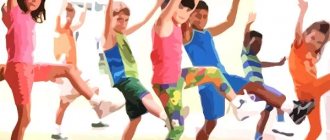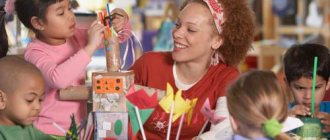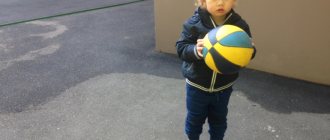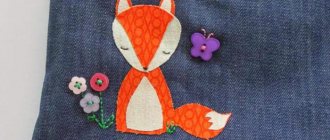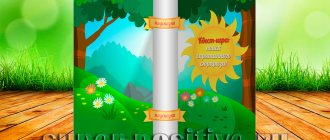When cycling, 70% of the muscles in our body are involved in work, that is, more than when running.
Photo: Shutterstock
It's finally spring! It's time to get out of stuffy gyms and cramped apartments and study outside. At this time, even people who are far from sports want to join the athletes. What do you need to know before starting training? We reviewed the seven most popular types of street physical activity together with Doctor of Medical Sciences, Professor, Academician of the Russian Academy of Natural Sciences, Head of the Department of Physical Therapy and Sports Medicine of the First Moscow State Medical University. THEM. Sechenov Evgeny Achkasov.
“It is very important that any physical activity not only develops muscles, but also strengthens the immune system and the body’s defenses,” our expert reminds. “Therefore, it is useful to regularly engage in physical exercise and sports to protect against various diseases, including infectious ones. On the street it is easier to give yourself larger and more varied loads. In the end, when we change the usual view of an apartment to the landscape of a park or forest, along which we jog or ride a bicycle, this, among other things, also gives an excellent emotional mood.
But, warns Evgeniy Achkasov, you should train away from roads and cars. Since we breathe heavily during any physical activity, near the tracks you can pick up exhaust gases with the entire periodic table. There will be no benefit from such training. Therefore, for any activities and exercises, the expert advises choosing parks, squares, and stadiums. Well, or at least yards with trees, bushes and lawns.
Exercise 7. “Running at close range”
To perform this exercise you will need a support - a bench or parallel bars. With our hands braced, we simply raise our knees to our chests and run in place. Don't forget to breathe correctly. The exercise is also performed for 30 seconds, two series.
Important: a common mistake is when they start doing the exercise in an overlapping manner, that is, folding the ankle back, but you should, on the contrary, try to control the knee so that it moves closer to the chest. It is also necessary not to bend your back - it should be straight.
Advertising
Exercise 1. “Star”
This exercise has several names, one of them is “Jumping Jack”. Starting position: legs together, arms extended along the body. While jumping, we raise our arms up and spread our legs. At the highest point we exhale. Perform intensively for 30 seconds. We can do a couple of episodes.
Important: at the top you need to bring your hands to the end; to be sure, you can clap above your head.
Exercise 2. “Pendulum”
During this exercise we also jump.
We jump from foot to foot, alternately moving the unused leg to the side. We exhale the moment we stand on our right or left leg. We also perform the exercise intensively for 30 seconds. Important: you need to monitor your body so that it remains motionless - only your legs work.
Summary of the physical education lesson “Winter” (for children of senior preschool age)
Prepared by physical education instructor Olga Vladimirovna Filatova
Target:
- Instill a love for physical education
- Create a joyful mood and positive emotions
Tasks:
Educational:
- Cultivate friendly relationships between children in physical education and recreational activities
Educational:
- Strengthen ball rolling skills
- Develop balance when walking on limited surfaces
- Enrich children's motor experience
Educational:
- Develop physical qualities: agility, speed, voluntary attention
Wellness:
- Create conditions to satisfy children’s natural needs for movement and play
Equipment: gymnastic benches - 2 pcs., medicine balls - 4-5 pcs., large rubber balls - 2 pcs., skittles according to the number of children.
1. INTRODUCTORY PART
Instructor:
I dusted the paths, decorated the windows, gave joy to the children, and gave them a sledding ride.
Children, what do you think this is? That's right, winter! What can you do in winter?
Children: - Sledding, skating, skiing, playing snowballs.
Instructor:
And today I invite you to go to the winter forest.
Children line up in a column one at a time and walk in a circle.
Instructor:
Like a little white snow fell on thin ice Ah, winter, winter, snow-white winter has come!
(Walking in circles)
Like a little white snow fell on thin ice so as not to trample it, you have to stand on your toes!
(Walking on tiptoes, hands on belt)
There is not enough snow. Under the snow the ice glistens timidly. We will glide on the ice deftly and skillfully!
(Walking at a side step, hands on the belt)
It has started snowing. Everyone is very happy about the snow. Let's run to catch snowflakes. Let's run to catch fluffs.
(Easy running in a circle)
Formation scattered around the hall. 2. MAIN PART
1) Outdoor switchgear
1. “Herringbone”
Spun the Christmas tree Winter snowstorms Dressed each needle in silver
IP - main stand. Execution: on the count of 1 - arms through the sides up, on the count of 2 - in an i.p. Repeat 8-10 times.
2. "Blizzard"
An angry blizzard makes noise and howls, fluffy shawls are torn from the trees
I.P. – main stand. Execution: count 1 - arms to the sides; on the count of 2-3 – tilt to the right and left. Repeat 8-10 times.
3. "Snow"
A white swarm curled and curled, sat on the ground, became a mountain
I.P. - kneeling, arms forward and down. Execution: on a count of 1-2 – arms up, reach for your hands, bend your back, on a count of 3-4 – in an i.p. Repeat 8-10 times.
4. "Green needles"
What grows on the Christmas tree? Green needles!
I.P. - sit on your heels, hands down. Execution: on a count of 1-2 - kneel, arms up - to the sides, on a count of 3-4 - in an i.p. Repeat 8-10 times.
5. "Sledge"
They stood all summer, waited for winter, waited for the season, and rushed down the mountain
IP - lying on your stomach, arms extended forward and upward, legs slightly raised. Execution: count 1-4 – swing back and forth; on the count of 5-8 - in IP. Repeat 6-8 times.
6. “Let’s warm ourselves up”
We'll warm up a little, we'll jump along the path
I.P. – legs together, hands on the belt. Execution: on the count of 1 - 8 - jumping legs apart (arms to the sides), legs together (hands on the belt), on the count 9 - 16 - walking in place. Repeat 3 times.
Children are formed into two teams.
2) BASIC TYPES OF MOVEMENTS
1. Instructor:
Where there is a lot of snow You can’t walk or drive There’s white snow in a field A snowstorm has blown overnight There’s a huge hump of snow It’s called “Snowdrift”!
You and I will now step over these snowdrifts.
“Through the snowdrifts” - balance: walking sideways on a gymnastic bench, stepping over medicine balls (the number of balls depends on the length of the bench), successively through each one (two additional steps, on the third - stepping over the ball). Hands on your waist or behind your head.
2. Instructor:
He appeared in the yard in the cold December, Clumsy and funny, standing by the skating rink with a broom, Our friend the snowman is used to the winter wind!
Our next task is to roll a snowball for the snowman!
“Rolling the ball in a straight line”: there is a pin in a column at a distance of 4 meters from the first child. Pushing the ball with your fingers (hands like a scoop), without letting it go far from you, roll it to the pin, take the ball in your hands, straighten up, raise the sword up - show everyone what kind of ball you rolled. After holding the ball close to you, run to the child standing first in the column, pass the ball to him and stand at the end of the column.
3. Instructor:
In order to heat the oven in frosty weather, we must chop them up and put them in a woodpile in the hallway or in the barn! What is this?
Children: Firewood!
Instructor: Our task is to quickly move the firewood so that we can light the stove and keep warm.
“Whoever moves the object faster” - there is a hoop near the child standing first in the column. There are pins in the hoop according to the number of children. At a distance of 4-5 meters there is another hoop. The child standing first in the column takes one pin from the hoop, runs to another hoop and puts the pin there. He runs to his column and passes the baton to the next child with a tap on the shoulder. He also takes one pin, runs with it to another hoop, puts the pin in the hoop, and so on, until the children transfer all the “firewood” pins from one hoop to another.
4. Game exercise “Take a friend for a sled ride.”
The first two children from each team, standing one behind the other, put on the hoop, holding it with their hands on both sides. The task is to quickly walk to a landmark located at a distance of 4 meters, go around it, return to your team and pass the hoop to the next pair of children.
Outdoor game "Bear"
Like snow, snow on a hill (Children stand in a circle, in the center of which the “bear” sleeps, slowly raise their arms up) And under the hill there is snow, snow (Squat down, lowering their arms) And snow, snow on the Christmas tree (Stand up, raising their arms up) And under the tree there is snow, snow (They squat, lowering their hands) Quiet, quiet... Don't make noise! (at the last words the “bear” wakes up and rushes to catch the children)
3. FINAL PART
1) Logori exercise
The sled rolled down (Children rotate their arms in front of them) Hold on tight, my friend! (They clasp their arms around their shoulders) Sit down, don’t fall (They threaten with their finger) There’s a groove in front (They stretch both arms in front of them) You have to drive carefully, (They threaten with your finger) Otherwise you might crash! (Lean forward) (O. Vysotskaya) 2) Stretching on the ground with elements of finger gymnastics “Winter” (I.P. - children sit on the mat, legs apart)
Winter has come (Three palms against each other) Brought frost (We massage the shoulders and forearms with our fingers) Winter has come (Three palms against each other) The nose is freezing (We massage the tip of the nose with our palm) Snow (Tilt towards the right leg, right hand on the belt, left at the top) Snowdrifts (Tilt towards the left leg, left hand on the belt, right hand at the top) Ice (With the body tilted forward, the palms “roll” forward) Everyone is on the street forward! (We straighten the body and clap our hands) We’ll put on warm pants (Run our hands over our legs from the socks to the hips - “putting on pants”) A hat, fur coat, felt boots (Run our palms over the head, over the arms, clap the legs) Warm our hands in mittens (Circular move the palms of one hand around the other palm) And tie scarves (Palms are placed on top of each other at the base of the neck) Call it the winter month! (Clap our hands) December! January! February! (We hit the knees with the fist, the edge of the palm and the palm of the hand)
List of used literature:
- Kopylova S.F. Physical education classes with elements of logorhythmics - Volgograd: Teacher, 2012.- 81s
- Penzulaeva L.I. Physical education in kindergarten. Preparatory group for school.-M. : Mosaic-Synthesis, 2014.- 112 p.
- Podolskaya E.N. Unusual physical education activities for preschoolers. – Volgograd: Teacher, 2011. – 167 p.
Exercise 3. “Running with overlaps”
The point of this exercise is to run in place. We run in place, trying to touch the gluteal muscle with our heels. You need to run for 30 seconds, you can do two series with a short rest break.
Important: it is difficult to make any mistakes when performing this exercise.
Physical development (motor) Set of exercises Physical education on the street
Physical development
(motor)
Set of exercises
Physical education on the street
middle group
Complex No. 1 (September).
Tasks:
Slow running;
jumping on 2 legs on the site; develop orientation in space, breathe through the nose on the street. 1 hour (3 min). Walking with hand movements (up, to the side, towards the shoulders).
Slow running. Walking.
2h. (14 min). Game “Find Your Place” (with hoops, cubes).
Jumping on 2 legs moving forward from the edge of the platform to the middle.
Walking.
Outdoor game “Quickly to the house.”
3h. (3 min). Slow walking. Breathing exercises.
Complex No. 2 (September).
Objectives : Strengthen the ability to run in all directions, without bumping into each other, and quickly respond to a signal. Jump in place on 2 legs, landing softly on the front of the foot in regular shoes.
1 hour Walking is normal, with high knees. Running in all directions. Walking.
2h. Outdoor game “My funny, ringing ball.”
Game “Birds in the Nests”, “Bird Hen and Chicks”.
3h. Short run. Walking. Breathing exercises.
Complex No. 3 (October)
Tasks:
Practice climbing stairs up and down, keep your back and head straight while running.
Develop endurance when running, breathe through your nose on the street. 1 hour Walking is normal, with arms raised up. Running is normal, scattered at a signal.
2h. Game “Run to the object” (running at a fast pace).
Climbing stairs with a side step up and down.
Outdoor game "Planes".
3h. Walk at a slow pace. Breathing exercises.
Complex No. 4 (October).
Objectives:
To strengthen the ability to maintain balance when walking and running along a narrow path.
Throw the ball from the chest 2 - with your hands through the cord (other objects). 1 hour Walking is normal. Jumping on 2 legs moving forward. Run in all directions, at a signal, in a column.
2h. Walking and running along a marked path (15 cm wide).
Game exercise “Throw the ball over the cord.” Throwing the ball from the chest with 2 hands over a cord at a signal.
Outdoor game "Hares and wolves".
3h. Walk at a slow pace. Breathing exercises.
Complex No. 5 (November).
Tasks:
Reinforce walking and running randomly when given a signal.
Practice rolling a ball between objects and breathing through your nose. 1 hour Game "Tram". Walking and running in a column, scattered.
2h. Rolling the ball with 2 hands away from you between objects (cubes) or under arcs.
Outdoor game “Chickens in the garden” (“chickens” crawl under the rope in a group in the “garden”, “watchman” - the child catches up).
Game “Who can run faster” (running at speed to a landmark)
3h. Walk at a slow pace. Breathing exercises.
Complex No. 6 (November).
Tasks:
Consolidate jumps while moving forward, throw the ball in front of you and catch it with 2 hands. Strengthen in the game the ability to run with acceleration and deceleration.
Exercise 8. “Tilts”
In the starting position, feet are shoulder-width apart. We tilt the body down, slightly bend the right knee and fix it in this position. With your left hand we touch your right toe. Then we straighten up, returning to the starting position in a light jump. After this, we perform the exercise on the left leg and right arm. We also perform it for 30 seconds, two series.
Important: the main mistake is that many people start to sit on their leg, but all they need to do is lower their body.
A set of outdoor exercises is suitable for both regular exercise and periodic warming up of the body during walks. And yet, it is better when a trainer is present at the lesson, who will control not only the correctness of the exercises, but will also monitor the state of the body, periodically measuring the pulse and adjusting the intensity of the exercises.
Outdoor exercises
Bar press
If the sports ground you choose has parallel bars, then you should definitely take advantage of this fact. Jump onto the parallel bars and secure the position. The body should be tilted slightly forward. Start lowering down until your elbow is at a 90-degree angle, then rise back to the starting position. Do 15-20 repetitions at a time.
Dips
Pull-ups
The presence of a horizontal bar allows you to perform pull-ups, which pump up your back and arm muscles well, and also train muscle endurance.
Grasp the horizontal bar with an overhand grip, place your hands shoulder-width apart. Pull yourself up without crossing your legs, smoothly, without jerking. The number of repetitions depends on the level of physical fitness.
Pull-ups
Burpee
To perform the exercise, take a lying position, do a regular push-up, then, as you return to the starting position, pull your legs forward, lift your hands off the surface and jump, clapping your hands above your head. Repeat 10-15 times.
Burpee
Goose step
Surely everyone remembers this exercise from school physical education lessons. Squat down and start walking forward. Your legs should not straighten; try to move with your knees bent. The execution time is one minute.
Jump Squats
Take the starting position - feet shoulder-width apart, hands behind your head. Start doing regular squats, jumping up as you rise. Try not to arch your back or spread your knees to the side, otherwise you can overstrain the ligaments. The exercise has a good effect on the leg muscles, pumping them effectively.
Plank
This exercise trains endurance, including muscle endurance, and also comprehensively pumps all the muscles of the body, since standing in this position, despite all its apparent simplicity, is actually quite difficult.
Read more about the plank exercise in this article.
Take a lying position, your hands should be shoulder-width apart. Lower your shoulders, squeeze your shoulder blades together. Try to stay in this position for as long as possible, start training with 30-45 seconds, gradually increasing the exercise time. Don't arch your back and buttocks, tense your muscles to support your body in the plank.
Hand push-ups from wood
Many exercises do not require special sports equipment; improvised means will do. This and the following are some of them.
Find a tree with a thick trunk, stand opposite it at a distance of a meter. Straighten one of your arms, put the other behind your back or stretch it along your body. Lean your body forward, placing your palm on the tree trunk. Do push-ups, changing hands as you move away from the tree. Do 15-20 repetitions on each arm.
Taking your legs back
Find a bench or any other support, stand in front of it and lean your hands on your elbows. Alternately move your right and left legs back. Do 15-20 repetitions for each leg.
Reverse climber
Find a bench or fence that stands about half a meter from ground level. Take a lying position with your feet on a support. Alternately pull your left and right legs towards your chest.
Easy running
You can finish your workout with a light jog. If you want to work closely on your endurance and improve your body’s running qualities, it is recommended to run at a “ragged” pace – periodically accelerating for several tens of meters, and then switching to your usual average pace.
Exercise 5. “Squats with overlaps”
We perform a shallow squat, then transfer the body weight to the left leg. After this, we raise our right arm up and move our right leg to the side. At the same time, we straighten the supporting leg, and with the right leg we overlap. We repeat the exercise with alternating legs and arms. At the highest point, at the moment of overflow, we exhale. We perform the exercise for 30 seconds, doing two series.
Important: sometimes people forget about proper breathing; it is necessary to exhale forcefully.
Advertising
Exercise 4. “High Thigh”
In essence, these are the same “overwhelms”, only in reverse. We run in place, raising our knees as high as possible. You can put your hands on your belt or move them as during normal running. Don't forget to breathe rhythmically. The exercise is also performed for 30 seconds, doing two series.
Important: do not bend your back, look forward.

